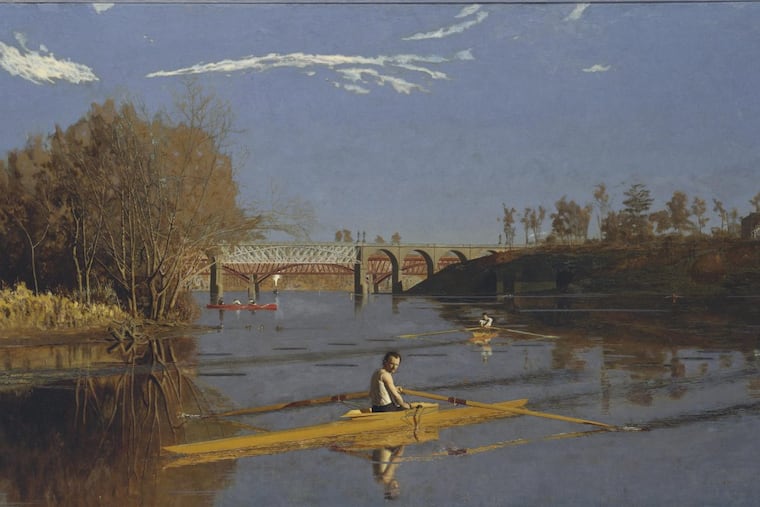An electronic billboard in Fairmount Park: Is nothing sacred? | Opinion
The park is our patrimony and to this day still serves in its original capacity to bring water to the city while serving as a democratic refuge in our backyard. Would we put a billboard in Rittenhouse Square?

In Thomas Eakins' masterful Max Schmitt in a Single Scull from 1871, the artist captures his Central High School classmate squinting squarely over his shoulder toward us, the viewers, gathered along the banks of the river. It is a scene that is at once classic and contemporary; the setting on a bend in the Schuylkill in Fairmount Park is one we can all conjure in our mind's eye – a bucolic curve in the waterway framed by industrial crossings in the distance. It also epitomizes Philadelphia's image as an emerging industrial power in the years before the Centennial.
Fairmount Park's raison d'etre when it began in 1844 was first and foremost to protect the water supply for the city of Philadelphia. It grew exponentially over the later part of the 19th century to encompass more than 4,000 acres in East and West Fairmount Park and the Wissahickon Valley Park.
I'm reminded of Eakins' iconic painting every time I'm on Martin Luther King Drive in the West Park passing the water pumping station at Montgomery Drive. The landscape is an extraordinary palimpsest of the history of a city that was purposely planned to balance nature and urban life. Fairmount Park is, after all, the fullest flowering of William Penn's founding vision of Philadelphia as a "greene countrie towne." In Fairmount Park, Penn's Liberty Lands take flight as an unparalleled working landscape that to this day still provides water to more than one million Philadelphians.
It's therefore particularly alarming to learn of Councilman Curtis Jones Jr.'s proposal to place a digital electronic billboard alongside the Schuylkill Expressway on a tract between the Strawberry Mansion Bridge and Montgomery Drive. Earlier this week, the Planning Commission voted against it, though that vote is nonbinding. The park is Philadelphia's sacred ground — a gift from an enlightened generation that understood the ineffable value of unencumbered open space for the physical, mental, and spiritual well-being of the citizens of Philadelphia. It would be irretrievably marred by the introduction of a digitally popping electronic billboard.
>> READ MORE: Councilman seeks Fairmount Park rezone so billboard can rise beside Schuylkill Expressway
The conversation should be about what we want the park to be like in 50 or 100 years. About how we can support and enhance the park as a gift in perpetuity for our children and grandchildren. About how we can correct the mistakes of the past and not enhance them. An electronic advertising billboard in the park shouldn't even be an option. The park is our patrimony and still serves in its original capacity to bring water to the city while serving as a democratic refuge in our backyard. Would we put a billboard in Rittenhouse Square?
Ironically, when we disbanded the Fairmount Park Commission in 2010, we lost an important civic muscle that was established in the 19th century as a bulwark for the park against the abuses of the political system. As a result, there isn't a countervailing civic watchdog that speaks for the park today.
Despite the park's formidable significance to the health and welfare of the city, we've taken it for granted over the years and allowed it to be degraded. The introduction of the automobile in the 20th century was the most damaging. The leisurely river drives designed for carriages of an earlier era have become high-speed commuter thoroughfares disrupting connections from the neighborhoods along the bluffs above the river and damaging the 16 creeks and streams that feed the Schuylkill. But it was the ramrod of the expressway, designed in the 1940s, that is undoubtedly the most egregious insult that the park has had to bear. Imagine giving over 400 acres of parkland for the car today.
We are losing sight of what is important if the conversation is about highways and billboards and advertising dollars. Parks are irreplaceable. They are timeless places that speak to profound truths about our humanity. Flashing billboards don't.
Harris Steinberg is executive director of the Lindy Institute for Urban Innovation, Distinguished Teaching Professor of Architecture, Design and Urbanism, Drexel University.